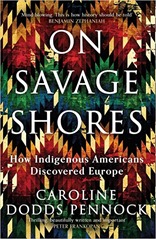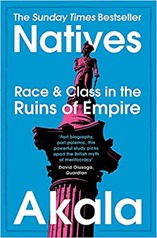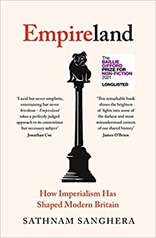My next review is of Africa is not a Country: Breaking stereotypes of modern Africa by Dipo Faloyin. It follows a thread of books I have read on Africa and Black people in the UK and elsewhere, this was prompted by the Black Lives Matter movement in 2020.
Africa is not a country is about viewing Africa from an African perspective. It is comprised of 8 parts, the first of which is a thumbnail sketch of the author, and his family, and where he grew up in Lagos. Faloyin is Nigerian with part Yoruba and part Igbo background although he was born in Chicago and now lives in London. He paints a vivid picture of his upbringing very unlike my own, mainly because his family is clearly very sociable and loves cities (or at least Lagos).
The second part goes on to talk about how the 54 countries of Africa came into being, starting with the Berlin Conference in 1884, in which the Western powers agreed to divide up Africa; no Africans participated, despite requests. One thing that struck me was that outside the conference politicians as senior as Gladstone in the UK knew that what they were doing was wrong. The US refused to sign the General Act of the conference, despite being participants. It isn’t clear whether this was a decision made on moral grounds. The 54 countries is something I think I will return to as a number, for comparison Europe has 44 countries, half the number of people and a third of the land area so we might expect Africa to be rather more diverse than Europe.
As a British European I don’t like to dwell too long on the colonial period. This part of the book highlights the preference of the British to out-source the colonisation problem to private companies, in particular the Royal Niger Company, which was taken over by Unilever (a former employer of mine) in the 1920s and only ended its existence in 1987. King Leopold II of Belgium’s subjugation of the Congo (essentially for his own personal gain) is spine-chilling – over the 20 years after the Berlin conference half the population, 10 million people were killed.
The division of Africa into arbitrary countries that did not follow ethnic or any other native pattern had consequences in the post-colonial period; the countries created at independence were naturally unstable so conflict was inevitable. However, the African consensus is that it is best to stick with these countries rather than attempt a wholesale reorganisation. This is not a peculiarly African problem, we can think about the fighting as Yugoslavia fell apart, and the Soviet Union, and the secessionist movements in Spain or Irish reunification.
Many of my early memories of Africa represented in the UK were of Band Aid, and the Ethiopian famine (1983-5). Faloyin sees this as the birth of modern white saviour imagery (I don’t disagree with him). Band Aid projected an image for all of Africa of famine and misery whose inhabitants could only be saved by the intervention of white Westerners – this theme has been repeated endlessly since then. It feels like things are changing though, for the 30th anniversary of Band Aid in 2014 there was a pretty large backlash with musicians with African backgrounds refusing take part. Of the leaders of the Aid/Relief movement Bob Geldof, for his part, essentially said the means justified the ends whilst Lenny Henry was more reflective on the appropriateness of the “white saviour” narrative.
The theme of representation gets a reprise in a later part of the book where Faloyin talks about representations of Africa in the movies which are usually highly stereotypical. This chapter is genuinely laugh out loud funny, as the author says it is a pastiche of Binyavanga Wainaina’s “How to write about Africa“. I hadn’t appreciated quite how revolutionary the film, Black Panther, was in terms of it’s representation of Africans. Actors in Black Panther did not act as generic Africans, they took on national or region speech and habits. Somewhat to my surprise Faloyin cites Coming to America as an earlier film in the same vein – sadly from Hollywood this appears to represent the full list of African films.
Faloyin talks about the story of post-independence democracy in seven types of dictatorship: cold war dealmakers, god-playing colonial masters, revolutionary heroes, opportunistic families, civil-war peacemakers, founding fathers and (rarely) unhinged madman with taste for human flesh. He does this through brief sketches of 7 post-independence leaders Siad Barre, Sani Abacha, Robert Mugabe, Paul Kagame, Abdelaziz Bouteflika, Obiang Nguena Mbasogo, and Muammar Gaddafi. Some of these dictators have fallen, but others and others like them remain in place. All of them have been supported to some degree by the West or the Soviet Union – sometimes both!
The chapter on looting is perhaps the most shameful for a British European since it is ongoing; the “Scramble for African” in the 19th century is beyond our reach – it happened in at least our great-great grandparents time. But in terms of looted artefacts it is my generation, people like me, in museums in my country who hold a tight grip on the artefacts taken (violently) by British forces during the Scramble with little obvious will to return them. Much of this discussion is based on the Benin Bronzes, these were not just taken, the sophisticated cities that held them were destroyed. Faloyin states that 90% of Africa’s cultural artefacts are now outside of Africa but of the 900 or so Benin Bronzes held by the British Museum, 800 or so are in storage. When Benin Bronzes went on (loaned) display in Cotonou, capital of Benin 275,000 people went to see them.
France, Germany, and Belgium were also heavily involved in looting artefacts – the Germans seem to have a particular enthusiasm for human remains which fed into their race science research.
It is fair to say there has been some progress on the return of artefacts to Africa but mainly in writing reports, with minor organisations returning a few artefacts with great fanfare, and foot dragging. Faloyin estimates that the number of artefacts under discussion for return is around 10% of the total.
Jollof, a rice dish from West Africa is a bit of a recurring theme through the book, clearly of critical importance to West Africans, and the author, but perhaps included for relief from some of the more serious chapters.
The book finishes with some vignettes with modern Africa, through protests in several countries, culture and the story of Botswana who fortunately discovered their diamond deposits after independence from the British and has thrived as a country since. Faloyin is optimistic about the future, he sees a young continent with a lot of positive things going on and perhaps signs of the end of the post-independence conflicts.





